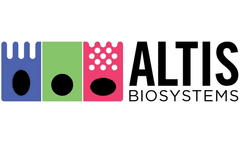In Vivo Using Articles & Analysis
11 articles found
The researchers discovered distinct sets of amygdala neurons active during action-consuming sequences using in vivo deep brain Ca2+ imaging and electrophysiology. For behaviorally relevant information, these sets were mixed spatially and propagated to multiple striatal subregions. ...
A Novel, High-Throughput Platform to Characterize Novel IBD Therapeutics Altis’ RepliGut® Planar platform provides a novel, human primary culture cell system that both reprises the cellular complexity of the intestinal tract in vivo which is established using 12- and 96-well Tranwells® inserts to maximize throughput and dosing/assay flexibility. ...
Precautions All MyBioSource products are for scientific laboratory research purposes and not for diagnostic, therapeutic, prophylactic or in vivo use. Through your purchase, you expressly represent and warrant to MyBioSource that you will properly test and use any Product purchased from MyBioSource in accordance with industry standards. ...
Both current in vitro and in vivo models used in the development of candidate therapies for the treatment of intestinal diseases have severe limitations. ...
Prediction of the first-in-human dosing regimens is a critical step in drug development and requires accurate quantitation of drug distribution. Traditional in vivo studies used to characterize clinical candidate’s volume of distribution are error-prone, time and cost intensive and lack reproducibility in clinical settings. ...
End users must see the benefits in using the new system. If it doesn’t save time or make their job easier, they will not be enthusiastic adopters. ...
The US Environmental Protection Agency has responsibility for assessing endocrine activity of more than 10 000 chemicals, a task that cannot reasonably be achieved solely through use of available mammalian and nonmammalian in vivo screening assays. Hence, it has been proposed that chemicals be prioritized for in vivo testing ...
Coumarin derivative anticoagulant rodenticides used for rodent control are posing a serious risk to wild bird populations. ...
This experiment was conducted to establish a system for detecting trace cobalt ions in water and plant tissues using a voltammetric in vivo sensor. Cyclic and stripping voltammetry was devised from hand-made, macro-type implantable three-electrode systems. ...
Abstract Polyetheretherketone (PEEK) is currently gaining popularity in orthopedic and spinal applications but has potential drawbacks in use. PEEK is biocompatible, similar in elasticity to bone, and radiolucent; however, it has been shown to be inert and does not integrate well with bone. ...
Using the SSD methodology, we derived a PNEC of 2 ng/L for E2. Insufficient data were available to construct an SSD for E1 or E3. Therefore, the authors used in vivo vitellogenin (VTG) induction studies to determine the relative potency of the steroid estrogens to induce VTG. Based on the relative differences between in vivo VTG ...








